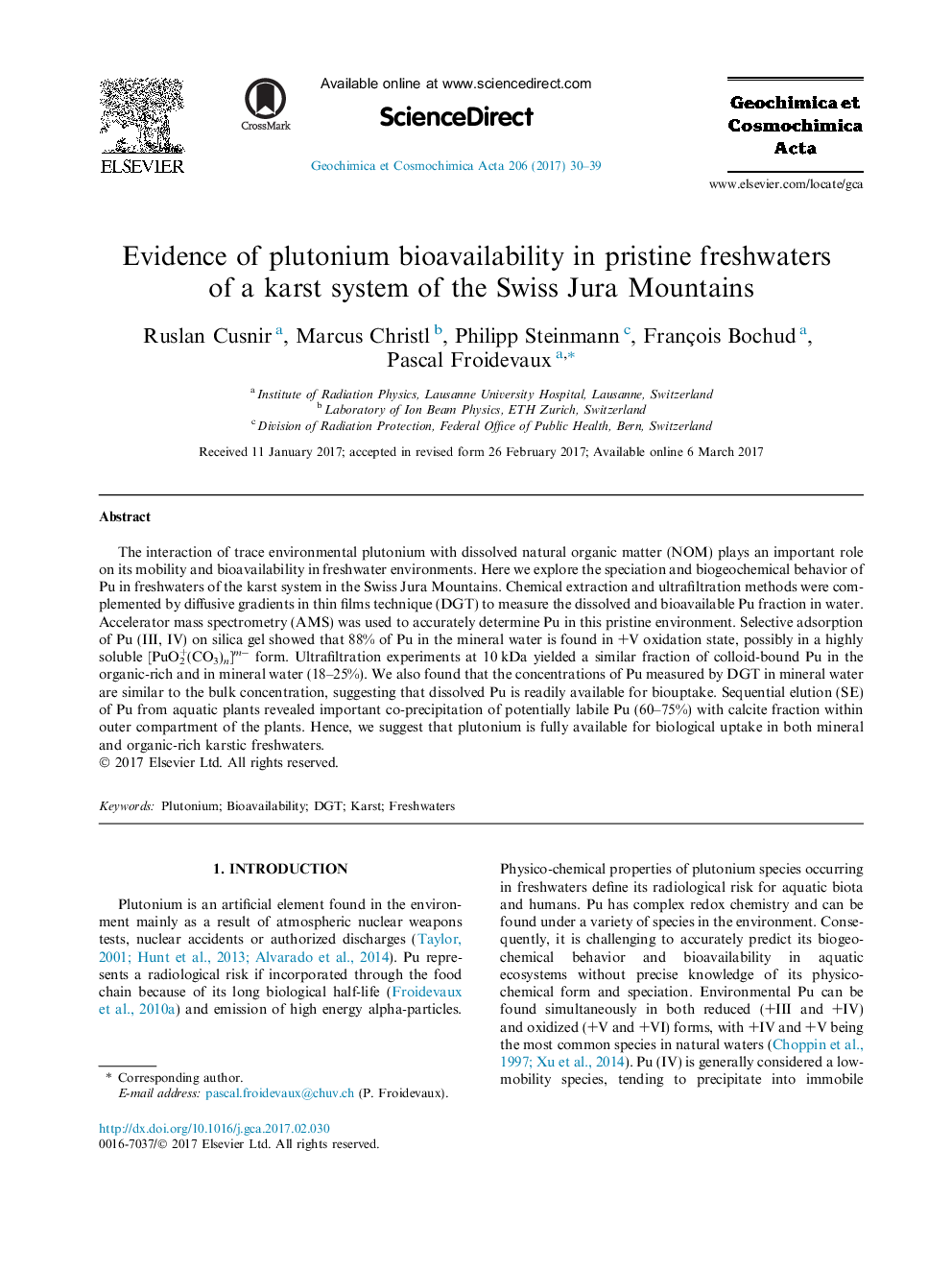| Article ID | Journal | Published Year | Pages | File Type |
|---|---|---|---|---|
| 5783410 | Geochimica et Cosmochimica Acta | 2017 | 10 Pages |
Abstract
The interaction of trace environmental plutonium with dissolved natural organic matter (NOM) plays an important role on its mobility and bioavailability in freshwater environments. Here we explore the speciation and biogeochemical behavior of Pu in freshwaters of the karst system in the Swiss Jura Mountains. Chemical extraction and ultrafiltration methods were complemented by diffusive gradients in thin films technique (DGT) to measure the dissolved and bioavailable Pu fraction in water. Accelerator mass spectrometry (AMS) was used to accurately determine Pu in this pristine environment. Selective adsorption of Pu (III, IV) on silica gel showed that 88% of Pu in the mineral water is found in +V oxidation state, possibly in a highly soluble [PuO2+(CO3)n]mâ form. Ultrafiltration experiments at 10Â kDa yielded a similar fraction of colloid-bound Pu in the organic-rich and in mineral water (18-25%). We also found that the concentrations of Pu measured by DGT in mineral water are similar to the bulk concentration, suggesting that dissolved Pu is readily available for biouptake. Sequential elution (SE) of Pu from aquatic plants revealed important co-precipitation of potentially labile Pu (60-75%) with calcite fraction within outer compartment of the plants. Hence, we suggest that plutonium is fully available for biological uptake in both mineral and organic-rich karstic freshwaters.
Related Topics
Physical Sciences and Engineering
Earth and Planetary Sciences
Geochemistry and Petrology
Authors
Ruslan Cusnir, Marcus Christl, Philipp Steinmann, François Bochud, Pascal Froidevaux,
